Individual – Sagrada Familia
BANNER APP ENTRADES PAG INDIVIDUAL
Who are you?
Individual
SAGRADA FAMÍLIA 26 €
Download the Sagrada Familia Oficial app to manage your tickets, listen to the audioguide and much more! For the best experience, we recommend downloading it before you come.
true false true false true
Sagrada Família Towers App audioguide Guided tour Sagrada Familia Oficial App
-
Sagrada Família Ticket
-
Sagrada Familia Oficial App
-
Downloadable audioguide (only with Sagrada Familia Oficial app)
-
Ticket does not include a tower visit
true false true false true
Sagrada Família Towers App audioguide Guided tour Sagrada Familia Oficial App
SAGRADA FAMÍLIA WITH GUIDED TOUR 30 €
Discover the Basilica with one of our specialised guides.
true false true true true
Sagrada Família Towers App audioguide Guided tour Sagrada Familia Oficial App
-
Sagrada Família Ticket
-
Sagrada Familia Oficial App
-
Downloadable audioguide (only with Sagrada Familia Oficial app)
-
Ticket does not include a tower visit
- Choose a time and language for your visit.
-
Available in 6 languages: Catalan (CA), Spanish (ES), English (EN), French (FR), Italian (IT) and German (DE).The number of languages available may vary by season.
true false true true true
Sagrada Família Towers App audioguide Guided tour Sagrada Familia Oficial App
SAGRADA FAMÍLIA WITH GUIDED TOUR AND TOWERS 40 €
Have a unique experience with one of our specialised guides. They will explain the Basilica’s best-kept secrets and you’ll get the best views of Barcelona from one of the two towers.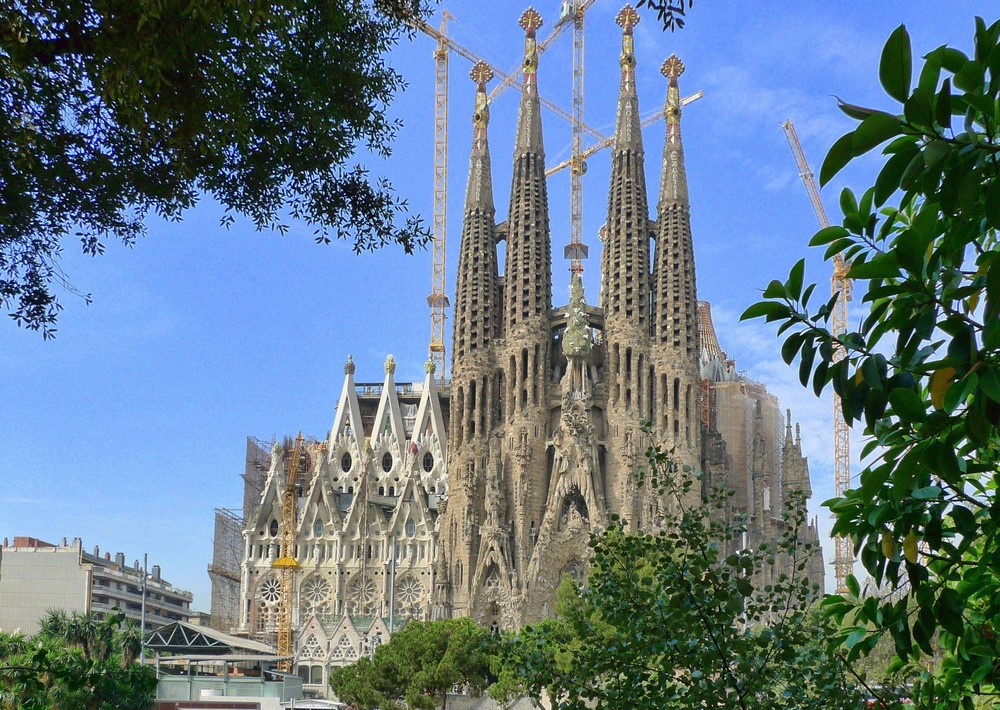
true true true true true
Sagrada Família Towers App audioguide Guided tour Sagrada Familia Oficial App
- Sagrada Família Ticket
- Sagrada Familia Oficial App
- Downloadable audioguide (only with Sagrada Familia Oficial app)
- Visit just ONE of the towers.
- Visitors must take the lifts up to the top of the towers and walk down. This area is not adapted for visitors with functional diversity or reduced mobility.
- The towers may be closed for maintenance or due to bad weather.
- Available in 6 languages: Catalan (CA), Spanish (ES), English (EN), French (FR), Italian (IT) and German (DE).The number of languages available may vary by season.
true true true true true
Sagrada Família Towers App audioguide Guided tour Sagrada Familia Oficial App
SAGRADA FAMÍLIA AND TOWERS 36 €
Download the Official Sagrada Família app to manage your tickets, listen to the audioguide and much more! For the best experience, we recommend you download it before coming.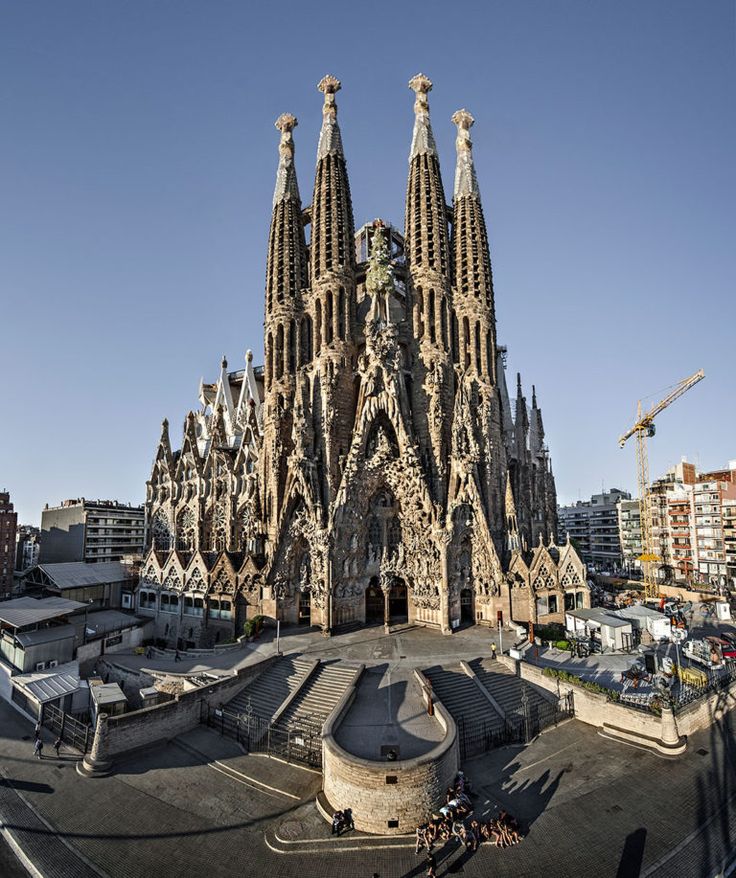
true true true false true
Sagrada Família Towers App audioguide Guided tour Sagrada Familia Oficial App
- Sagrada Família Ticket
- Sagrada Familia Oficial App
- Downloadable audioguide (only with Sagrada Familia Oficial app)
- Visit just ONE of the towers.
- Visitors must take the lifts up to the top of the towers and walk down. This area is not adapted for visitors with functional diversity or reduced mobility.
- The towers may be closed for maintenance or due to bad weather.
true true true false true
Sagrada Família Towers App audioguide Guided tour Sagrada Familia Oficial App
IMPORTANT NOTE
Official ticket vendors. Tickets without commissions.
If you have any problems purchasing tickets and/or downloading the app, contact the Booking Management Centre by phone on 931 980 705 or email at reserves@ext.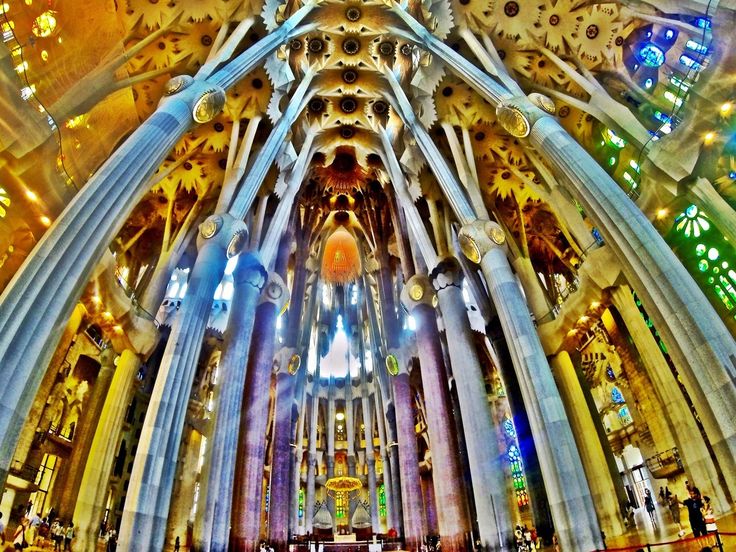
Sagrada Família is only responsible for tickets purchased on its official website www.sagradafamilia.org or from the official ticket supplier www.clorian.com.
Tickets free of charge for children under 11, disabled + 1 companion. Check discounts in FAQs page.
Visitors under 16 must be accompanied by an adult.
Your ticket is a contribution to the construction.
The Basilica is a space under construction. Routes and tours may be modified. The temporary closure of any of the spaces at the Basilica does not entitle visitors to any discount or refund of the ticket price.
No images may be recorded or broadcast for commercial or dissemination purposes without express permission from the Foundation.
You will have to go through security before entering.
Check the general terms and conditions for online ticket purchases here.
Títol Caiguda Clorian
The Basilica of the Sagrada Família is temporarily closed to the public
Parrafo 1 Caiguda Clorian
You can continue enjoying the experience from home with our virtual tours: https://sagradafamilia.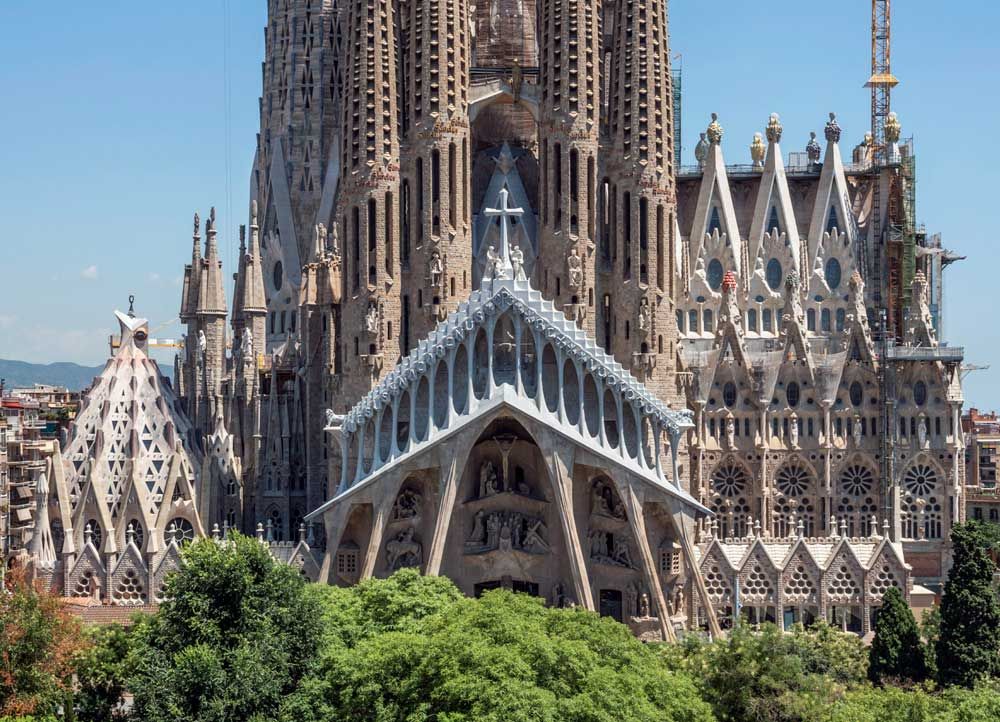
Sorry for the inconvenience. More information: https://tinyurl.com/y6q2t88p
For queries you can contact:
You can continue enjoying the experience from home with our virtual tours: https://sagradafamilia.org/en/virtual-tour
Sorry for the inconvenience. More information: https://tinyurl.com/y6q2t88p
For queries you can contact:
Listado iconos Caiguda Clorian
-
email
-
Facebook
-
Twitter
-
Instagram
Parrafo 2 – Caiguda clorian
For questions regarding your entries:
For questions regarding your entries:
Listado iconos Caiguda Clorian 2
La Sagrada Família | L’Eixample, Barcelona | Attractions
The Temple Expiatori de la Sagrada Família (Expiatory Temple of the Holy Family) is considered to be the symbol of Barcelona by many residents, and the one place you shouldn’t miss when you visit the Catalan capital.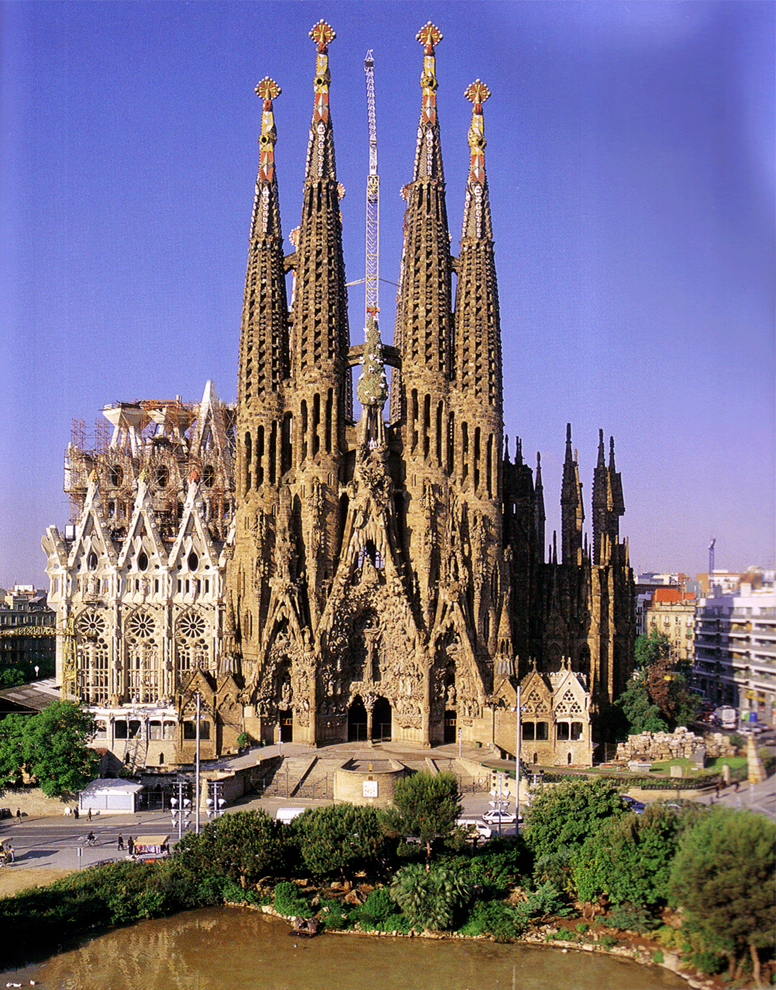
Initially intended to be a simple Roman Catholic church dedicated to Jesus, Mary and Joseph, the church ultimately became the most prominent example of Catalan Modernism. Pope Benedict XVI declared it a basilica in 2010.
Dreamed up by Catalan architect Antoni Gaudí, the basilica exemplifies Gaudí’s philosophy that nature is the work of God. Gaudí sought to combine Christian speech and biblical allegories with complex natural symbols like organic, geometric shapes which are prominent in every column, pinnacle and stained glass window of the basilica.
The end result is an astounding architectural masterpiece which, despite being unfinished and under construction for nearly 140 years, has become one of the most visited monuments in Spain, receiving 4.7 million visitors in 2019.
A detailed view of a facade of the Sagrada Familia in Barcelona. ©Yury Dmitrienko/Shutterstock
History of the Sagrada Familia
The creation and construction of the Sagrada Familia is living history.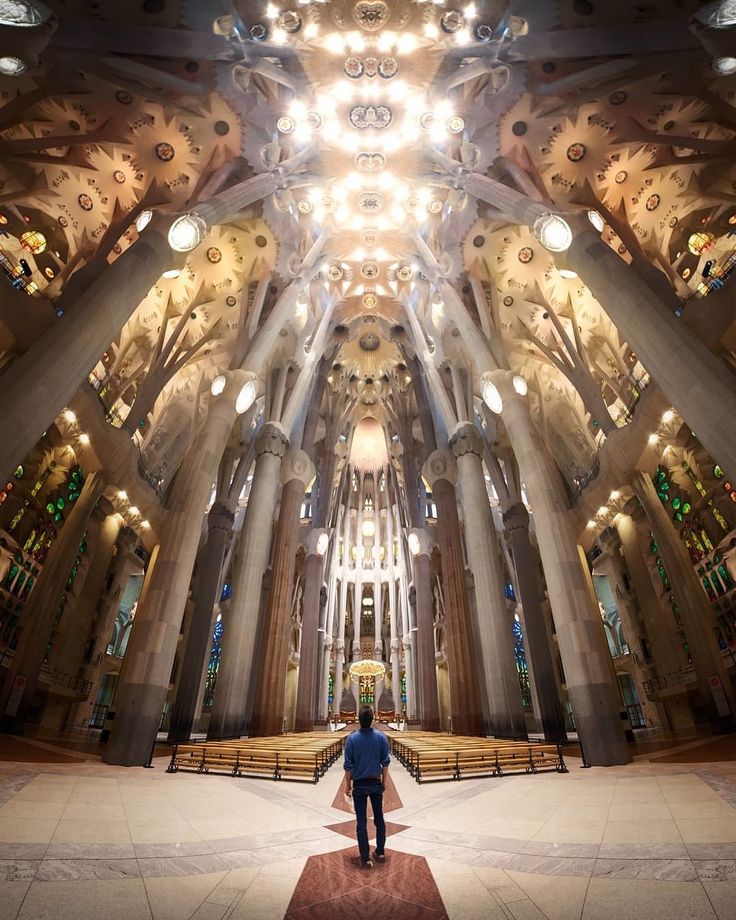
Local bookseller Josep Maria Bocabella wanted to build an expiatory temple consecrated to the Holy Family. Bocabella initially assigned the project to the architect Francisco de Paula del Villar, who designed a neo-Gothic project, and began construction in 1882.
However, because of several disagreements with Bocabella, Antoni Gaudí took over the assignment. Gaudí conceived a groundbreaking design that pushed the boundaries of all known architectural styles.
Gaudí’s primary goal was to build a church with facades that highlighted the three phases in the life of Jesus: Nativity, Passion and Glory. The architect’s vision was to incorporate organic symbolism in the architecture, stained glass and design elements in order to tell Jesus’s story as well as highlight some key biblical histories.
In 1891, when development of the Nativity facade began, Gaudí realized that the construction of the Sagrada Família was such an ambitious project that he certainly would not see its completion in his lifetime.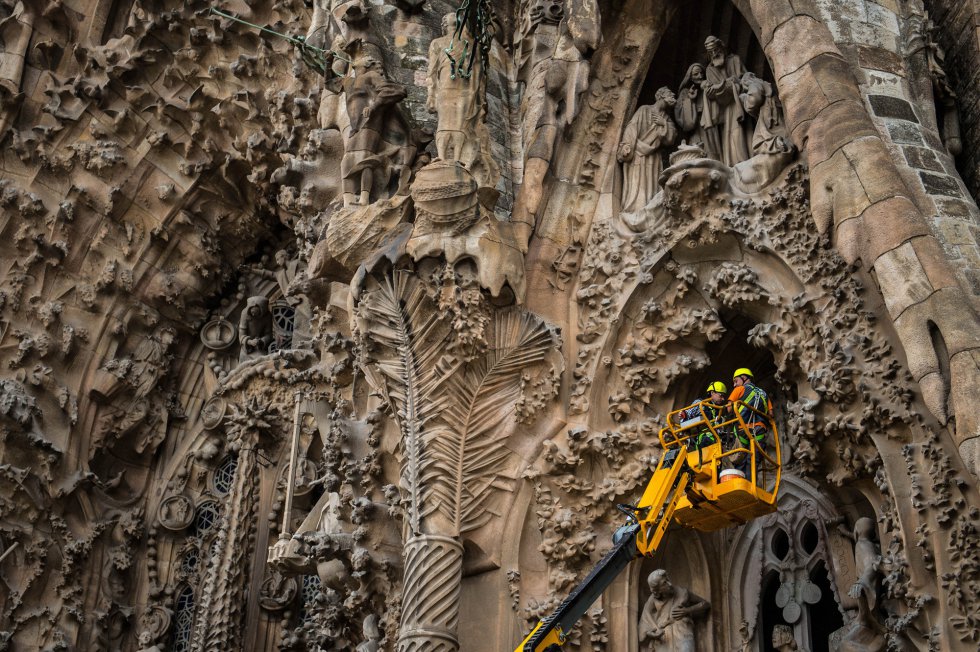
At the time, Gaudí was also working on Casa Milà (La Pedrera) and when that was completed in 1912, he focused exclusively on the construction of the Sagrada Família. He worked on it until he died in 1926 and was buried inside the crypt. After Gaudi’s death, Domènec Sugrañes i Gras assumed the main role of architect.
The temple suffered heavy damage during Spain’s Civil War (1936-39), when a group of anarchists set it on fire, burning a significant part of Gaudí’s workshop. Fortunately, part of his material could be restored.
Work resumed in 1954 and it’s been under construction ever since.
The stained glass windows of the Sagrada Familia. ©Alessandro Colle/Shutterstock
Why is the Sagrada Família not finished and when will be completed?
Even with today’s technology, skilled architects and engineers are finding it challenging to decipher and bring to life the complex geometric shapes that compose what is going to be the tallest church in the world (172.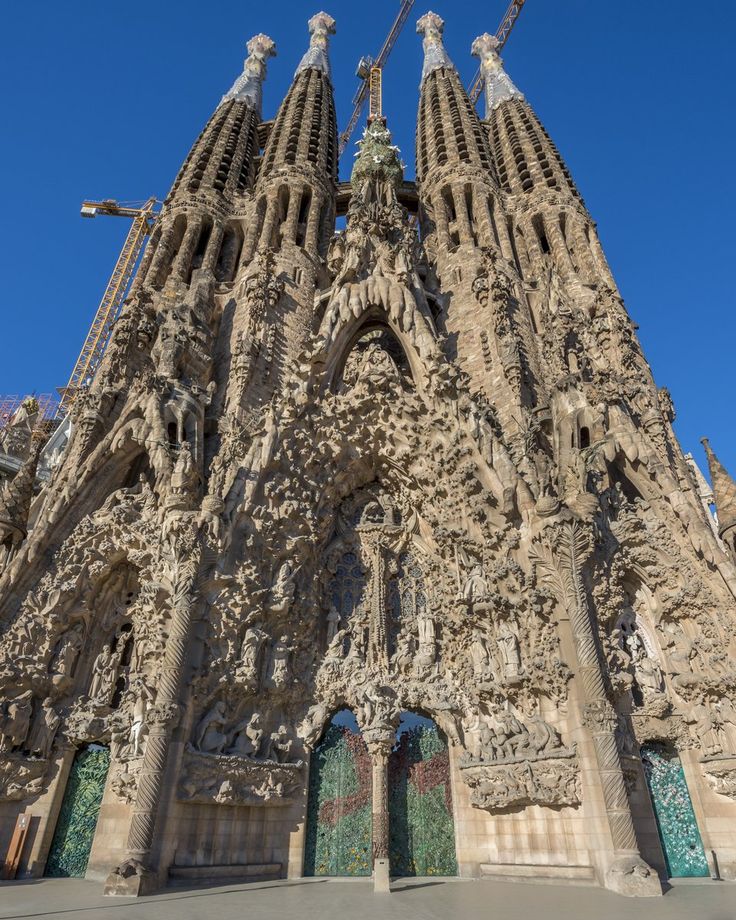
In addition, despite its international renown, the Sagrada Família is a project that was promoted by the people for the people, so it has always relied on private donations. There have been times in history when there wasn’t any funding, especially during Spain’s Civil War and the decades that followed. It was only after the 1992 Olympic Games in Barcelona, when the city started to gain an international reputation and the number of visitors increased, that construction accelerated exponentially.
The Sagrada Família was expected to be completed in 2026 – for the centenary of Gaudí’s death – but its completion has been postponed because of COVID-19. Work has resumed already but a new completion date hasn’t been announced.
Visiting the Sagrada Família
The site of the Sagrada Família has four main sections: the basilica, the school building, museum and towers. In the past, each section required its own ticket to visit. However, due to COVID-19, the only portion available to visitors is the basilica.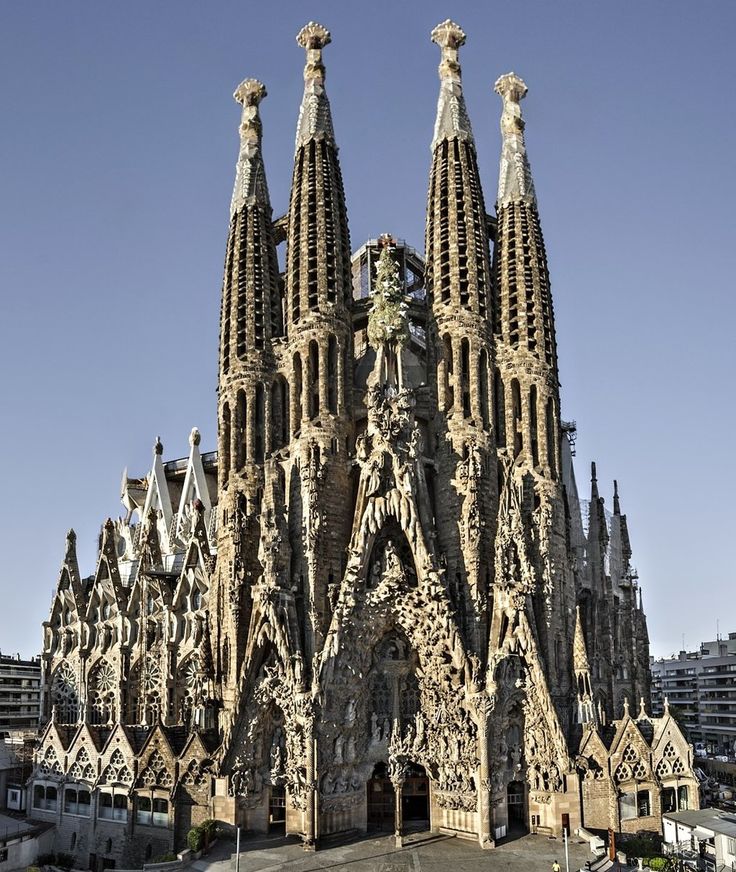
To visit the basilica, an individual ticket with an audio-guide app – available in 16 languages – costs €26. If you prefer visiting it on a guided tour – available in 6 languages – an individual ticket costs €27, which also allows you to visit the site on your own after the 50-minute tour is finished.
The Basilica
The Basilica is composed of five naves, built in the shape of a Latin cross, the roof of which is supported by the angled pillars. These angled pillars are a treelike column structure that creates the effect of a living forest with dappled light streaming in.
Gaudí Museum
The Gaudí Museum has a recreation of the architect’s workshop, as well as a set of his materials and mockups.
School Building
Gaudí designed and built the school building, which was for the workers’ children, in 1909. Its design is similar to that of the Casa Milà.
The Towers
Four towers representing the 12 apostles ascend from each of the three exterior facades (Nativity, Passion and Glory).
How to get to the Sagrada Familia
The Sagrada Família is in the Eixample district, in Mallorca, 401 street. Metro lines 2 and 5 stop at Sagrada Família station. From Barcelona’s Old City, it’s a 30- to 40-minute walk.
When to visit the Sagrada Familia
The Basilica is open to visitors every day of the year, subject to change due to special events taking place inside.
To avoid the largest crowds, it’s best to visit early weekday mornings.
A complete visit takes 2-3 hours.
Things to do around the Sagrada Familia
The Right Eixample is home to some of Barcelona’s major attractions which can be easily visited after your Sagrada Família tour.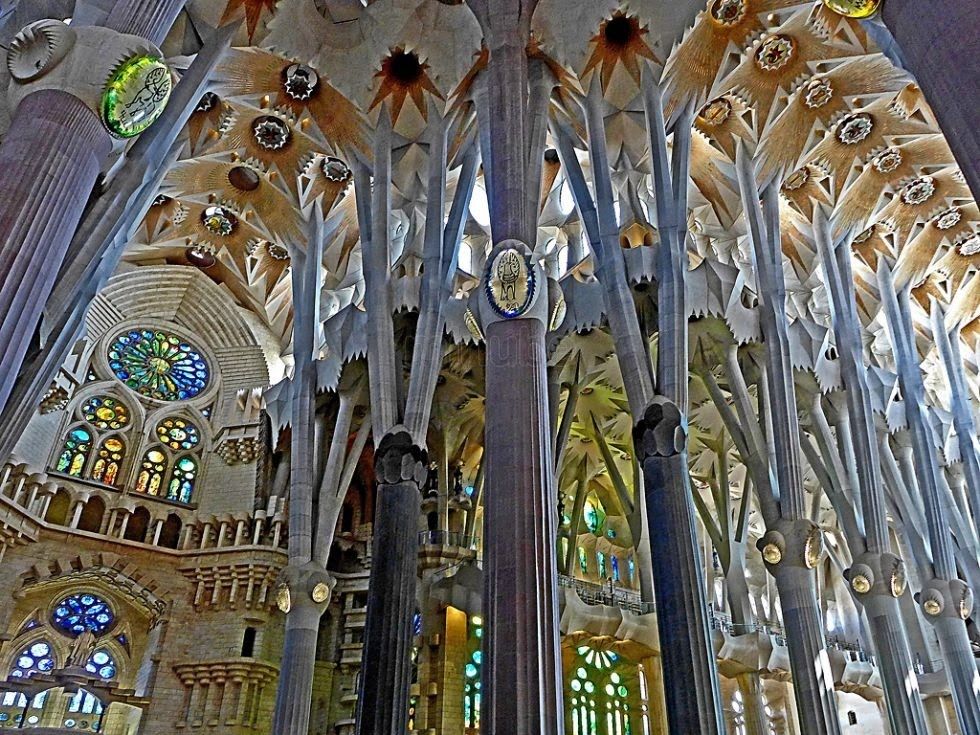
Where to eat near the Sagrada Família
Be aware that all restaurants surrounding the Sagrada Família cater to the tourist crowd. However, by walking just a few blocks, you come to a particularly local area of l’Eixample.
For Spanish tapas and wine, we recommend Hasta Los Andares. For authentic Spanish tortillas, look for La Granota and, for traditional Catalan food, grab a bite at Olé Mallorca, which tends to get busy at lunch time (2 to 3pm). In the morning, you must stop at Puiggròs, a one hundred year-old patisserie.
Sagrada de Familia: Sagrada Familia
Sagrada de Familia is an iconic landmark in Barcelona.
The role of the residence of the archbishop in Barcelona is assigned to the Cathedral of the Holy Cross and Saint Eulalia.
The Sagrada Familia is built on a piece of land that does not belong to the city’s church. However, there is a common misconception that the Holy Family is the stronghold of the church. Every year, the Sagrada Familia makes about three million travelers go to Barcelona to see this masterpiece with their own eyes.
The lines to buy tickets to the Holy Family are very time consuming.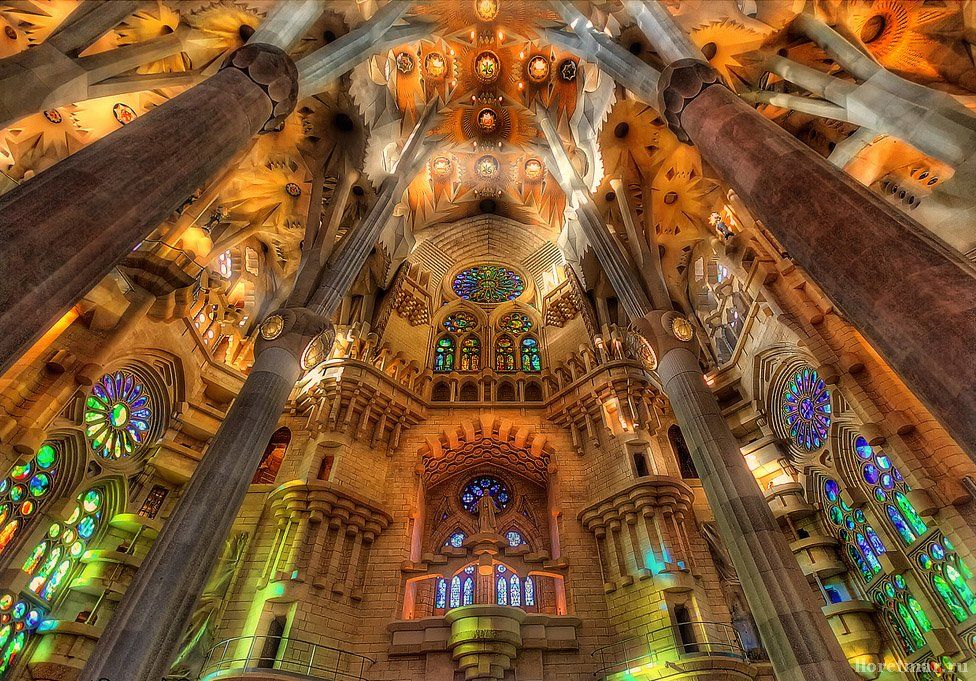
Sagrada Familia
How the Sagrada de Familia was built
Sagrada Familia owes a lot to ordinary parishioners who collected a significant amount as a donation. In 1881, a plot of land was bought near Barcelona, which determined the future location of the Sagrada Familia. Since then, Barcelona has grown significantly in terms of total urban area. Now the Sagrada Familia is a landmark in one of the central districts of Barcelona.
The main landmark of central Barcelona
Initially, the construction of the Sagrada Familia was entrusted to Francisco del Villar, who actively began work in 1882. It was planned that the Holy Family will appear as a building with a neo-Gothic basilica in the shape of a cross.
In the direction taken, a large apse with seven chapels was designed. The constant disputes between the customers and the architect escalated the situation, preventing them from focusing on the construction process.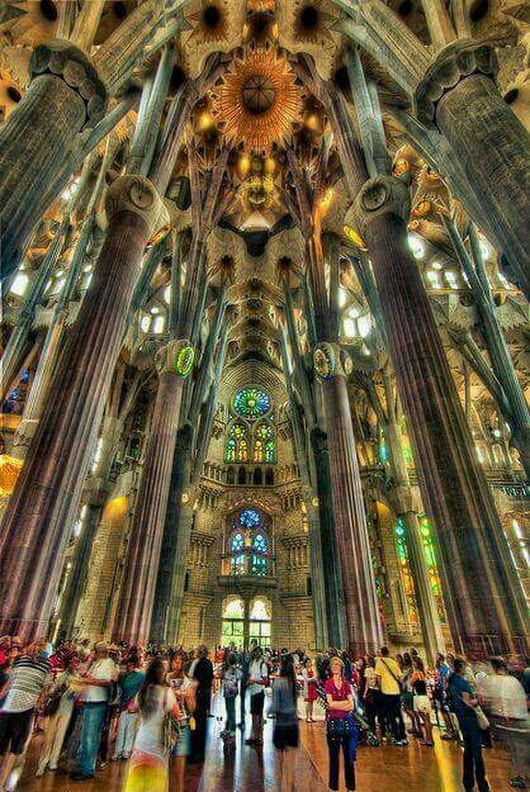
Antonio Gaudí picked up the baton and rejected the developments created before him. The architect in his work considered the compatibility of the building with the natural features of the territory as the most important aspect.
After much deliberation, the concept of the sandcastle became the basis for Sagrada Familia. Gaudi did not want to encroach on the greatness of nature, so he decided that the central spire of the Sagrada Familia should not exceed 170 meters in height. The indicator of Montjuic is 1 meter higher. The harmony of nature and human activity is a leitmotif through all the works of Gaudí. Each time the architect developed original ideas based on natural grandeur.
Sagrada Familia is the most famous long-term construction in the world
7 years after the start of work, the Sagrada Familia received a crypt, the beginning of which was laid by the previous architect.
Financial problems plagued the Sagrada Familia from the very beginning. This seriously affected the pace of work.
Sagrada de Familia
Fortunately, during the construction of the apse, a serious amount of money was received, which allowed us to revise the concept. The form of the building has not been adjusted, but a number of impressive towers have transformed the Sagrada Familia. Antonio wanted to make a project that would surprise with the nuances that are available only when studying the details of the structure.
Peculiarities of external facades
The first impression of the church is built on the basis of the seen facades: Nativity, Glory and Passion of Christ.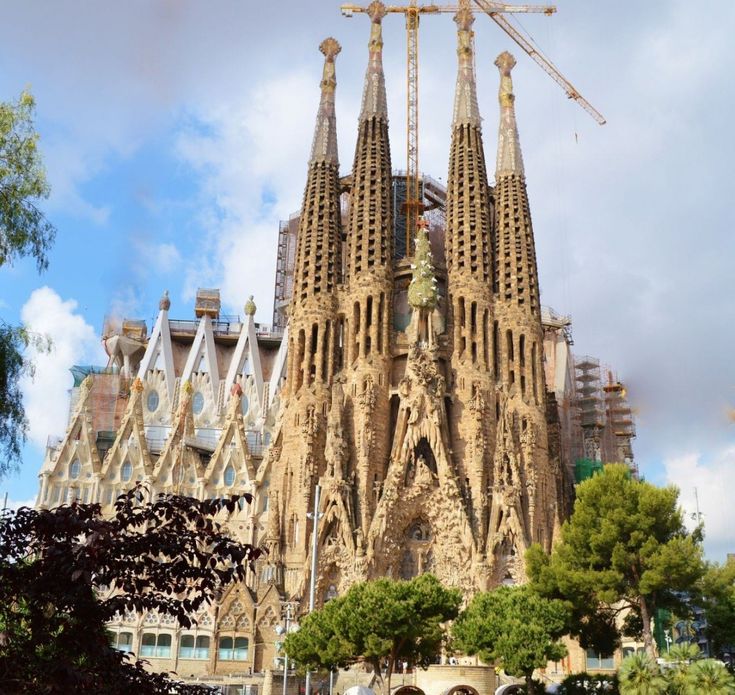
As conceived by the architect, the primary goal was to build the facade of the Nativity:
- It occupies a central place in the overall composition.
- The ideas of this façade are continued in others.
- It was important to show the people of Barcelona the main idea so that there would be no unnecessary questions.
- The Nativity facade is originally decorated with snails and lizards.
- Much attention was paid to the construction of the cloister corresponding to the portal of the Holy Virgin of the Rosary.
At the beginning of the 20th century, the Sagrada Familia received the outlines that define the general style of the building. Even then, the people of Barcelona argued for a long time about what the final decision would look like. But no one doubted that the architectural building would become one of the key places in the city.
Gaudí intended to build a parochial school that would perfectly complement the concept of the Sagrada Familia. It took only 1 calendar year to realize the idea. And now the building surprises with how the curvilinear outlines made it possible to achieve a significant margin of safety. The Passion Facade was completed after the death of the architect.
The year 1925 is typical for the construction of the Sagrada Familia in that it was possible to complete the construction of the Nativity façade. The huge column of St. Barnabas attracts attention.
Farewell to the genius of Barcelona. The death of Antonio Gaudi.
June 7, 1926 is a fateful day for the construction of the Sagrada de Familia and all of Barcelona. An event has occurred that once again raises the issue of social inequality. As a result of an accident, Gaudí was hit by a tram. Antonio dressed like a man of not the highest income and status. In this regard, it was decided to send him to the hospital, where the level of assistance provided was insufficient to save his life.
Responsibility for the continuation of the construction of the Sagrada Familia fell on the shoulders of Domenech Sugranes. During his lifetime, Gaudi noted the extraordinary talent of his student.
How the construction of the Sagrada Familia continued after the death of Gaudí
- By the thirties of the last century, work on the construction of the columns of the Nativity facade was completed. The outbreak of civil war became a serious obstacle to the construction process.
- We must not forget that Gaudí’s drawings burned down in 1936 at the height of hostilities.
- After the end of the war, work on the construction continued. I had to conduct the process without Sugranes, who died in 1938.
- 1952 is considered a successful year for the construction of the Sagrada Familia.
It is characterized by the fact that a spiral staircase and lighting were erected during this period. We were approaching the logical conclusion of work with the Nativity façade, preparing to begin construction of the Passion façade. The crypt has been completed.
- By 1977 the towers of the Passion façade had been erected. To decorate the Sagrada Familia, they began to create stained-glass windows and sculptures. The Nativity of Christ has become the central theme of jewelry.
- Now the pace of construction of the Sagrada Familia has been noticeably increased with the help of new technologies in construction. In 2010, the construction of the apse and crossroads was completed.
- The next stage is the construction of two towers. The main height is exactly 170 meters. The construction of the towers is carried out in order to pay tribute to the majesty of Christ and the Virgin Mary.
Curious details about the Sagrada Familia
According to the project, it is required to build 4 more towers in honor of the Evangelists.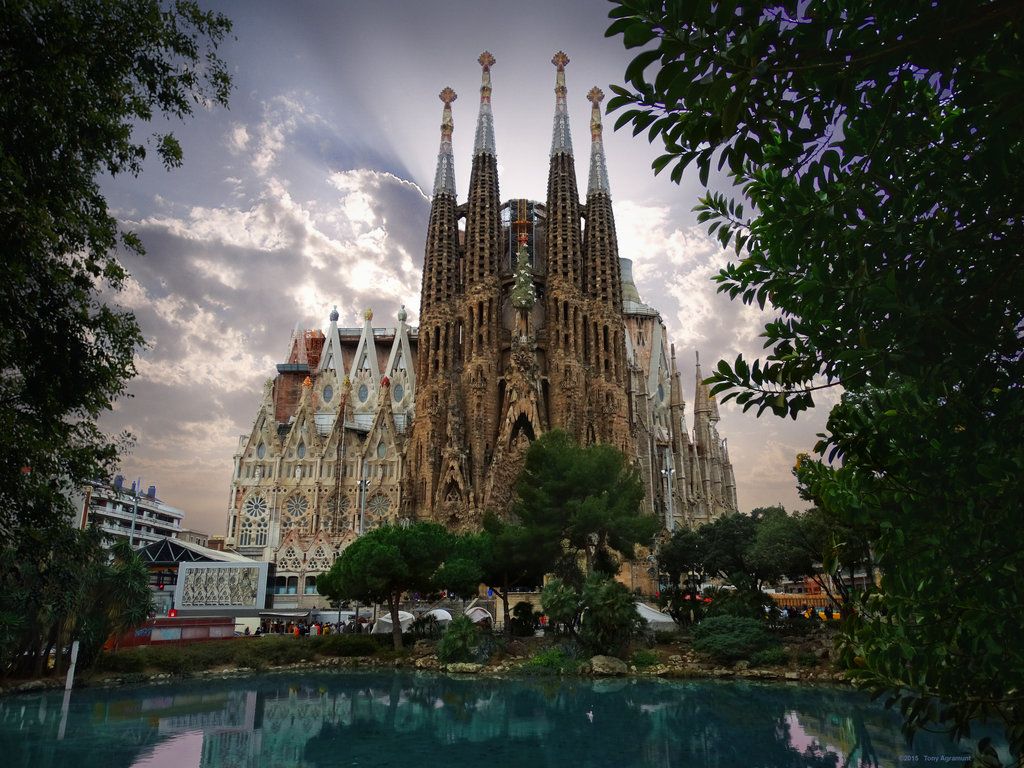
If everything goes according to plan, Barcelona will see the final appearance of the Sagrada de Familia in 2026.
The temple is beautiful not only with the inventive forms of the facades, but also impresses with its originality from the inside. The architect avoided template solutions, being inspired by natural grace and beauty. The developed project is extremely complex in terms of implementation and requires a lot of time. The geometric shapes used present a lot of difficulties in erection, but provide architectural beauty never seen before.
The temple from the inside
Now enough money is being spent on the construction of the Sagrada de Familia, the best professionals in their craft, who know modern computer technologies for design, are involved. We can assume that there has never been such a prosperous period in the history of the Sagrada Familia.
Difficulties with the processing of stone blocks are solved by means of modern information technologies.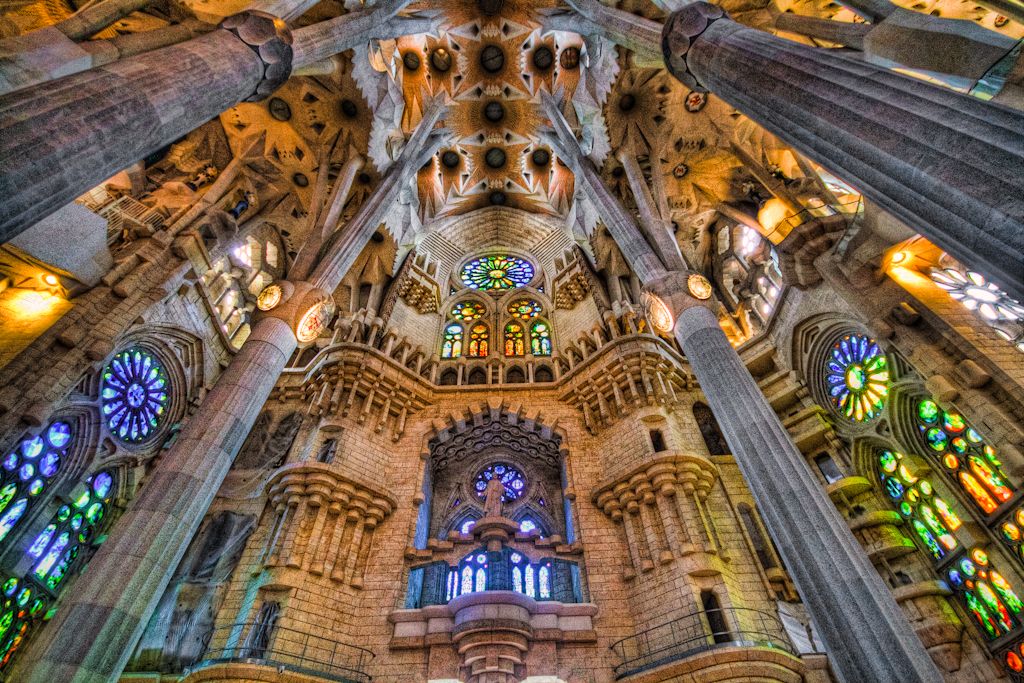
Purchase of tickets to Sagrada Familia
Decorative mosaic and stucco work, unusual stained-glass windows create a unique interior appearance. The realized play of light is among the main advantages of the building. From the inside, it seems that Gaudí managed to subdue the space and play with the structure as required by the project.
Sagrada Familia
Huge queues that make you lose precious hours in Barcelona bring a number of inconveniences. It is recommended to save yourself from wasting time by purchasing tickets online. You can buy them without price markups at the link .
The price of a ticket to enter the attraction is 20€.
Sagrada de Familia has a fixed opening hours by months:
- October-March (09:00-18:00)
- April-September (09:00-20:00)
Buying tickets in advance is absolutely the right decision, which saves a lot of time.
Step-by-step ticketing is described in material .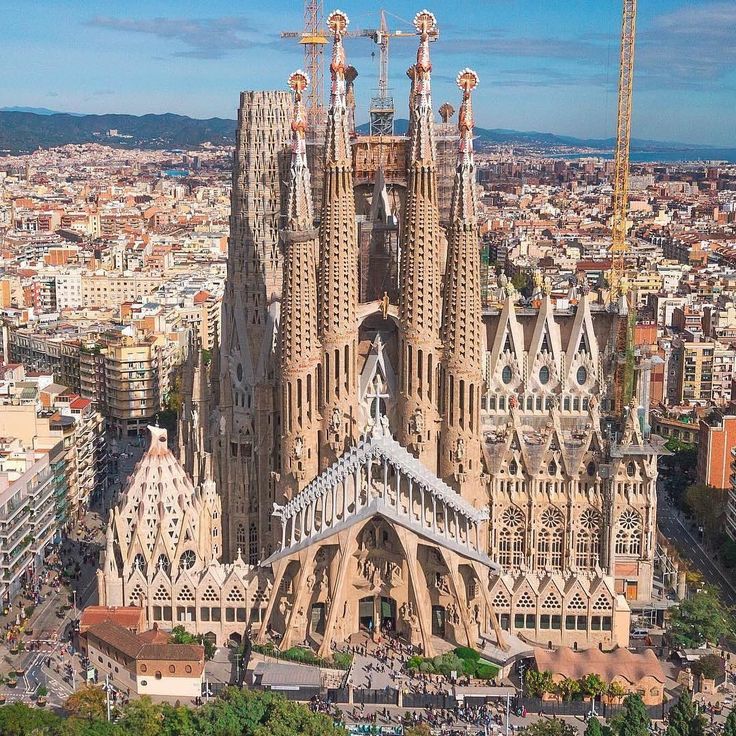
Address
Barcelona, Via Mallorca, 401
You can view the best hotels nearby in using the link on Booking.com.
Public transport to Sagrada de Familia
- Metro : Sagrada Familia station blue and purple lines L2 and L5
- Buses : 19, 33, 34, 43, 44, 50, 51, B20 and B24
Holidays: December 25, 26, January 1, 6 – 09:00-14:00.
Schedule
- November to February: 9:00 am to 6:00 pm
- March and October: 9:00 am to 7:00 pm
- April to September: 09:00 to 20:00
- 25 and 26 December, 1 and 6 January: from 9:00 to 14:00
- Ticket sales end thirty minutes before closing time
Location Sagrada Familia
- How to avoid queues at Barcelona attractions. Tickets for Sagrada Familia and Park Güell skip the line.
-
How not to be deceived by local taxi drivers.
Order a taxi in advance with fixed rates online. The most reliable service for ordering a taxi is KiwiTaxi .
- Tours in Barcelona with locals will help you get to know this city for real. The best way to get comfortable in an unfamiliar city is to walk around it with a person who has lived here for many years.
- We advise you to take out travel insurance so that there are no unpleasant surprises while traveling to Barcelona.
- Barcelona City Pass is a one-stop card that makes organizing your holiday in Barcelona easier and saves you a lot of time and money.
- Barcelona Hotels: is our selection and recommendations.
- Bus Turistic is a tourist bus and a great way to get to all the necessary monuments of Barcelona quickly, with a breeze and comfort.
-
Drimsim is a universal international SIM card and a free travel application.
Best prices, fast internet and worldwide calls.
photo, tickets, address on the map
Located not far from the center of the magnificent landmark of Barcelona and one of the most amazing Catholic churches – Sagrada Familia surprises not only with the grandeur of its appearance, but also with its history.
The very idea of building the cathedral belongs to Joseph Maria Bocabella, the president of a religious organization and a well-known book publisher.
Sagrada Familia © TTstudio / Shutterstock
The history of Sagrada Familia
Sagrada Familia is one of the main creations of the brilliant architect Antoni Gaudi, who had his own inimitable architectural style. The temple can be called the work of his life and the crown of creation. Its design and construction lasted 43 years. Gaudi was a deeply religious person and believed that the cathedral should embody the New Testament in its appearance.
Work on the construction of the temple began in 1882, and the first project belonged to Francisco de Villar, who a few years later passed the construction into the hands of Gaudí.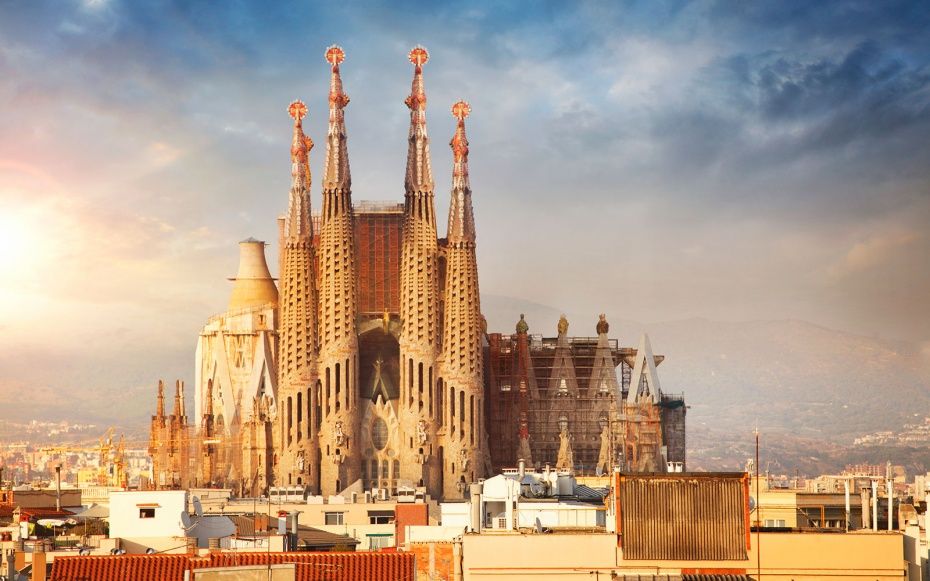
Each of the facades Gaudí gave a name: “Christmas”, “Passion of Christ” and “Resurrection” and dedicated to a certain segment of Christ’s existence. Antonio began his work on facades in 1892, paying special attention to the birth of Christ, believing that not everyone can understand the Passion of Christ.
Sagrada Familia © Rodrigo Garrido / Shutterstock
Eternal construction
Despite the fact that Gaudí put in a lot of effort, he never had time to complete the Sagrada Familia. In 1926, the architect died under very tragic circumstances, leaving several options for the design of facades. For a long time there were disputes about whether to continue the unfinished construction, and even attempts were made that ended in failure.

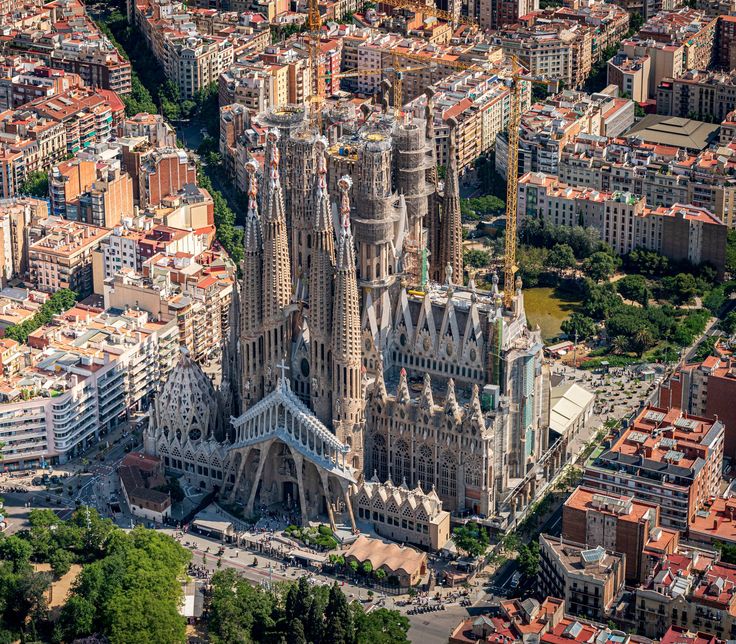 It is characterized by the fact that a spiral staircase and lighting were erected during this period. We were approaching the logical conclusion of work with the Nativity façade, preparing to begin construction of the Passion façade. The crypt has been completed.
It is characterized by the fact that a spiral staircase and lighting were erected during this period. We were approaching the logical conclusion of work with the Nativity façade, preparing to begin construction of the Passion façade. The crypt has been completed. 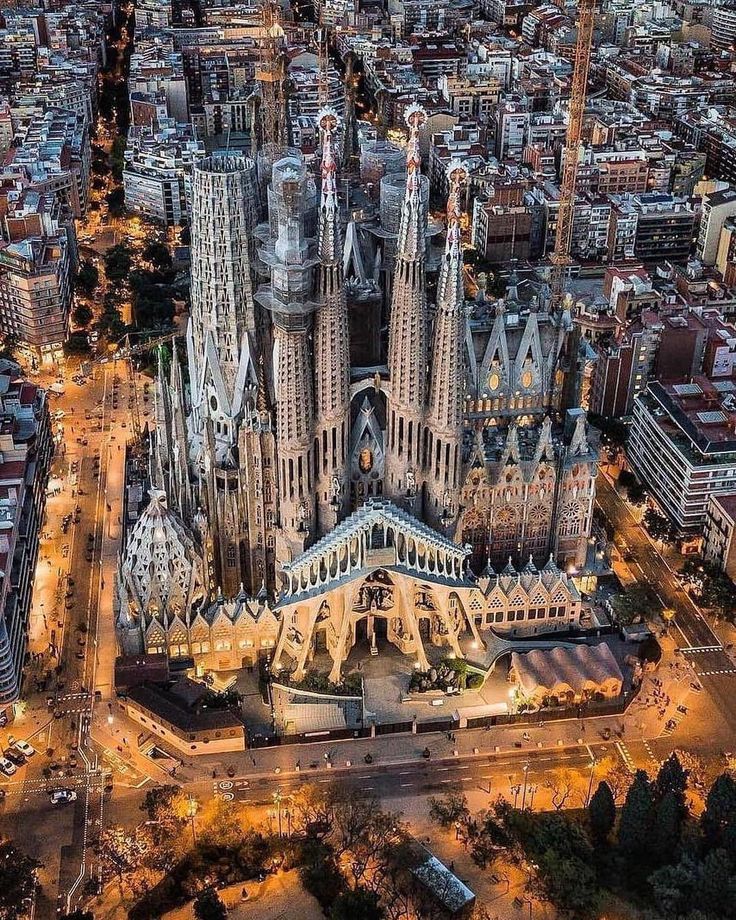 Order a taxi in advance with fixed rates online. The most reliable service for ordering a taxi is KiwiTaxi .
Order a taxi in advance with fixed rates online. The most reliable service for ordering a taxi is KiwiTaxi .
 Best prices, fast internet and worldwide calls.
Best prices, fast internet and worldwide calls.
